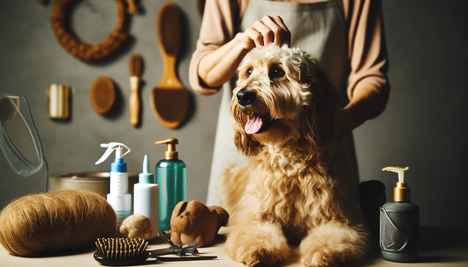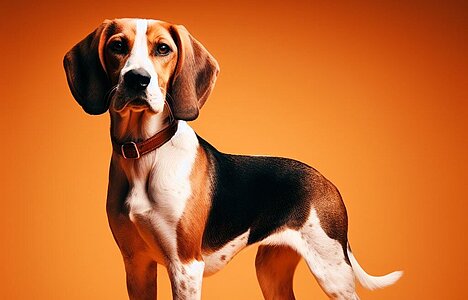Attribute "Not an easy-care coat"

No easy-care coat: What this means for your dog
Introduction
If you're thinking about getting a dog, you've probably heard the term "low-maintenance coat". But what does it actually mean when a dog breed doesn't have an easy-care coat? In this article, we explain in detail what challenges and tasks you will face if your future four-legged friend is one of the breeds with a demanding coat. We take a look at which dog breeds are affected, what care the coat needs and how you can get the best out of coat care.
What does "not an easy-care coat" mean?
Definition and characteristics
A dog with a 'low maintenance coat' has a coat texture that requires regular and intensive grooming to stay healthy and attractive. This can take various forms, including long, dense, curly or double-layered coats. Such coats tend to mat easily, attract dirt and parasites and can quickly become tangled.
Examples of affected dog breeds
Some well-known dog breeds that do not have low-maintenance coats are
- Afghan Hound: Known for their long, silky coat that requires regular brushing and washing.
- Poodle: Their curly coat is prone to matting and requires frequent trimming and brushing.
- Shih Tzu: The long, double-layered coat requires daily grooming to prevent matting.
- Bernese Mountain Dog: With its dense undercoat, it needs a lot of grooming during the shedding season.
The challenges of coat care
Regular brushing and combing
Dogs with demanding coats often need daily brushing. This helps to prevent matting and removes loose hair and dirt. Depending on the coat type, you will need special brushes and combs. A dog with a long coat, such as the Afghan Hound, will benefit from a coarse-toothed comb, while a poodle with a curly coat will need a special slicker brush.
Bathing and clipping
In addition to brushing, regular bathing is also important. Dogs with thick or long coats should be bathed approximately every four to six weeks to keep the coat clean and free of dirt and parasites. The coat also needs to be clipped often. This means that you either need to learn how to shear a dog professionally or schedule regular appointments with a groomer.
Check for skin problems and parasites
Another problem with an unkempt coat is the increased susceptibility to skin problems and parasite infestation. Thick or long coats can keep the skin underneath moist and warm, creating ideal conditions for bacteria and parasites such as fleas and ticks. Regular checks and appropriate protective measures are therefore essential.
Tips for optimal coat care
The right equipment
Invest in high-quality grooming utensils. This includes brushes and combs that are specially adapted to your dog's coat type, as well as a good dog shampoo and conditioner. A high-quality clipper can also be a worthwhile investment.
Establish a grooming routine
Create a regular grooming routine that you and your dog can easily stick to. Start grooming as a puppy so that your dog gets used to it and accepts it as part of their everyday life.
Professional tips from the groomer
Even if you groom your dog yourself at home, it's a good idea to get tips and tricks from a professional groomer from time to time. They can show you how best to groom certain problem areas and which techniques are most effective.
Conclusion
Having a dog with a "no grooming coat" may mean more work and time commitment, but it's also a wonderful way to build a close bond with your four-legged friend. With proper grooming and a good routine, your dog's coat will stay healthy, shiny and tangle-free. It requires dedication and care, but the joy of having a well-groomed and happy dog by your side is well worth the effort.


